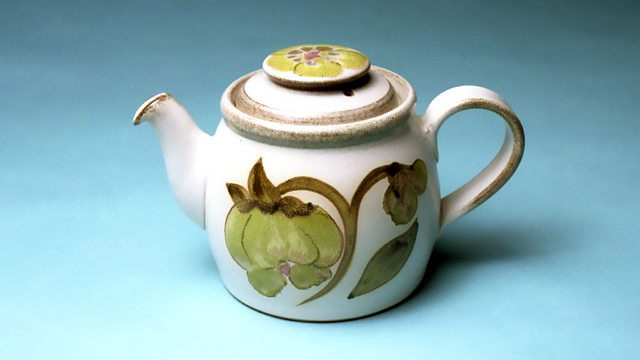
09/01/2013
Mel finds out about the history of teapots, hears the next chapter of 'The Silver Bead', plus Dick and Dom are back with more science experience in 'How Dangerous Is Your House'.
Last on
Clip
-
![]()
Dick and Dom: Hall and Stairs
Duration: 12:39
Activity 1: Air Resistance
If you have stairs inside your house, the hallway can be a good place to look at the effects of air resistance. If there was no air resistance at all, and you were to drop items from the top of the stairs down to the bottom, they would all fall at the same rate. But there is air inside your house, and you can see the effect of air resistance using just a few sheets of paper, and dropping them from the top of the stairs.
��
Take your sheets of paper, and make them into different shapes. Think about what might make them fall through the air more quickly. For example, you could scrunch one sheet into a ball, and fold another into a pointy shape. Keep one sheet completely flat and unfolded too. Then, go up one flight of stairs, and drop them down. Watch what happens.
��
When Dick and Dom did this experiment, they found that Dick's scrunched up ball of paper, and Dom's aerodynamic paper aeroplane, pushed down through the air and fell the fastest. The unfolded piece of paper caught the air, and fell more slowly.
Activity 2: Make a Parachute
Sometimes, you want to fall as slowly as possible though. A good example of where air resistane is very important is in a parachute. You can make your own for a small toy.
��
You will need:
- Polythene bags (supermarket bags)
- scissors
- hole punch
- string/thread
- small toy
Take your polythene bag, and cut out a large circle from it. Make four holes, evenly spaced around the edge of the circle. Cut four equal lengths of thread, and tie them to each hole. Next, find a small toy to act as a weight (but not too heavy!), and tie the other end of each piece of thread to the toy. Then all you need to do is find somewhere to test out your parachute!
��
You can try using different shapes for your parachute: for example, try making a square or rectangular parachute or even an octagonal one. You want your shape to be as large as possible to trap air as it falls. When Dom made his parachute, he made a pyramid shape using the bottom corner of a polythene bag, which trapped lots of air, and made his dinosaur toy float gently down the stairs. Which shape works best for you?
Activity 3: Why do hard floors feel cold?
The hallway is an area where you can go from one room of the house into another – so it's a good place to think about the differences between rooms. Have you ever walked along a cosy carpeted hall onto a tiled bathroom floor and noticed how cold it feels underfoot? If you have a somewhere in your house where you have a hard floor next to a carpet or rug, give it a try: take your shoes and socks off, and see how they feel when you stand on one surface as compared to the other.
��
But is the hard floor really colder? After all, they are in the same house, right next to each other.�� In actual fact, the two different floor surfaces will be a very similar temperature. The difference is in what they are doing to your feet. A carpet will act as an insulator, and keep your feet warm. But a hard floor will act as a conductor of heat – taking it from your feet! Heat is being conducted away from your feet into the solid floor, making your feet feel cold. Which is why slippers are a very good thing, like a carpet, they insulate your feet!
Broadcasts
- Wed 9 Jan 2013 16:0091�ȱ� Radio 4 Extra
- Wed 20 Mar 2013 16:0091�ȱ� Radio 4 Extra

